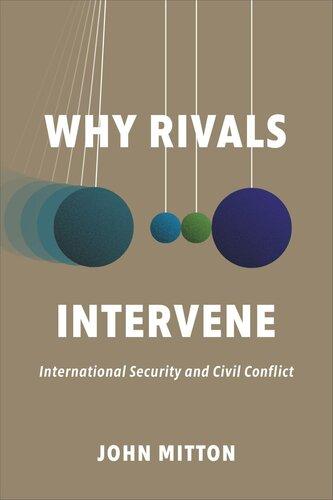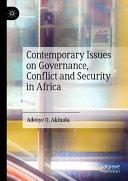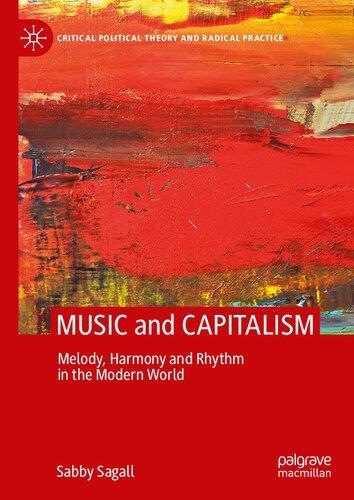Why Rivals Intervene
International Security and Civil Conflict
JOHN MITTON
UNIVERSITY OF TORONTO PRESS
Toronto Buffalo London
©
University of Toronto Press 2023
Toronto Buffalo London
utorontopress.com
Printed in the U.S.A.
ISBN 978-1-4875-0827-2 (cloth)
ISBN 978-1-4875-3791-3 (EPUB)
ISBN 978-1-4875-3790-6 (PDF)
Library and Archives Canada Cataloguing in Publication
Title: Why rivals intervene : international security and civil conflict / John Mitton.
Names: Mitton, John, author.
Description: Includes bibliographical references and index.
Identifiers: Canadiana (print) 20220427674 | Canadiana (ebook) 20220427712 | ISBN 9781487508272 (cloth) | ISBN 9781487537906 (PDF) | ISBN 9781487537913 (EPUB)
Subjects: LCSH: Intervention (International law) – Case studies. | LCSH: Civil war – Case studies. | LCSH: Security, International –Case studies. | LCGFT: Case studies.
Classification: LCC JZ6368 .M58 2023 | DDC 341.5/84 – dc23
We wish to acknowledge the land on which the University of Toronto Press operates. This land is the traditional territory of the Wendat, the Anishnaabeg, the Haudenosaunee, the Métis, and the Mississaugas of the Credit First Nation.
University of Toronto Press acknowledges the financial support of the Government of Canada, the Canada Council for the Arts, and the Ontario Arts Council, an agency of the Government of Ontario, for its publishing activities.
Funded by the Financé par le Government gouvernement of Canada du Canada
For mankind do not await the attack of a superior power, they anticipate it.
– Thucydides, History of the Peloponnesian War, Book XI, para. 18
It is better to judge dispositions, not intentions.
– Israel Defense Force Chief of Staff (1974–8) Mordecai Gur
When elephants fght it is the grass that suffers.
– Kikuyu proverb
This page intentionally left blank
List of Tables, Figures, and Maps viii
Acknowledgments ix
1 Introduction 3
2 A Theory of Rivalry (Intervention) 19
3 The Indian-Pakistani Rivalry 53
4 Indian Intervention in Afghanistan 73
5 Pakistani Intervention in Afghanistan 107
6 The Syrian-Israeli Rivalry and Intervention in Lebanon 159
7 The US-Soviet Rivalry and Intervention in Angola 197
8 Conclusion 229 References 243 Index 271
Tables, Figures, and Maps
Tables
1 Composition of Afghan Provisional Government, 2002 78
2 Case Summaries 231
Figures
1 Visualization of an Explanation for Rivalry Intervention 43
2 Number of Insurgent Attacks, by Year, Afghanistan, 2002–6 126
3 Number of Fatalities from Insurgent Attacks, by Year, Afghanistan, 2002–6 126
Maps
1 Afghanistan 71
2 Lebanon 173
3 Angola 207
WHY RIVALS INTERVENE
This page intentionally left blank
Chapter One
Introduction
Many of the most prominent conflicts of the twenty-first century (Afghanistan, Libya, Syria, etc.) have been, at one time or another, characterized as civil conflicts subject to outside, third-party intervention. In the latter half of the twentieth century, the ideological and geopolitical struggle between the United States and the Soviet Union was defined, in part, by interventions and “proxy wars” in various corners of the globe. In the ancient world, Rome and Carthage were drawn into the first Punic War as a result of intervention in Sicily, in which each empire supported opposing sides (Mamertine and Syracuse) in a local dispute. The Peloponnesian War between Athens and Sparta, similarly, included local conflicts in which allies were supported by the two great powers; even the First Peloponnesian War in 460 BC was triggered, in part, by balancing support to Megara and Corinth in a local border dispute. “Intervention is as ancient and well-established an instrument of foreign policy as are diplomatic pressure, negotiations and war,” wrote Hans J. Morgenthau (1967, 425), “from the time of the ancient Greeks to this day, some states have found it advantageous to intervene in the affairs of other states on behalf of their own interests [while] other states, in view of their interests, have opposed such interventions and have intervened on behalf of theirs.” While the modern study of international war typically has been divorced from the study of civil conflict, this distinction belies important interrelations (both theoretical and empirical) that reveal themselves in the study of history and, in particular, the study of relations between antagonistic states – enemies or rivals – in the international system.
Understanding the international dimensions of civil wars represents one of the most important and pressing puzzles in the study of world conflict, one that spans diverse literatures in comparative politics and international relations (IR), and that requires a theoretical engagement
that goes beyond merely identifying the correlated conditions of probabilistic intervention. More must be done to understand why states intervene in civil conflicts – that is, to identify and explore the causal mechanisms which trigger intervention in specific circumstances –particularly if the deleterious effects of prolonged violence that result from such interventions are to be mitigated or prevented. Civil conflicts that experience “balancing” or “dual-sided” interventions, in which each domestic faction is supported by an outside patron, are longer, bloodier, and more difficult to resolve than those that do not (Cunningham 2010; Hironaka 2005). To take the Afghanistan case alone, the death toll after nearly two decades of war stands near 240,000 (Crawford, Fiederlein, Rzegocki 2021) – this, in a conflict many recognize as exacerbated by Pakistani involvement that Western policymakers have been unable to dissuade despite prolonged and concerted effort. A better appreciation of the rationale and logic undergirding Pakistani behaviour is essential for improving policy in this instance; even more, an understanding of why certain countries are so committed to seemingly counterproductive interventions can be useful as new conflicts emerge.
This book focuses on the theory and practice of intervention in civil conflict by international rivals – that is, the phenomenon of two states, locked in a long-term and ongoing acrimonious relationship, intervening on opposing sides of a civil conflict occurring in another state. As mentioned, the empirical record – particularly after the Second World War – suggests that not only is this behaviour fairly common (at least 35 such conflicts occurred between 1945 and 2002); it also generates and exacerbates a significant amount of conflict, violence, and bloodshed in world politics. My primary research objective is to explain this behaviour and, in so doing, suggest ways the international community might prevent these types of interventions from recurring (or better manage their consequences).
I argue that international rivalry is an ongoing (continuous) strategic relationship in which the push of the past (experience and reputations), defined by war, conflict, and crisis, and the pull of the future (uncertainty), in which security and survival are the ultimate goals, trigger balancing behaviour vis-à-vis external civil conflicts. This dynamic affects how rivals intervene. Contrary to many standard interpretations of intervention, rivals are inclined to focus on the overarching international relationship. The immediate stakes of the civil conflict – the gains intrinsic to the country in question – are less relevant. More specifically, rivals will be less concerned with helping a particular side win and instead be driven by a desire to frustrate or block their rival’s capacity to further its own interests. The animating motivation is the prospect
of future confrontation, conflict, and war at the international level. The stakes of the civil conflict are considered through this prism, and other interests (including material gains, immediate security, and/or identification with domestic groups) are either irrelevant or sacrificed in favour of protecting long-term security vis-à-vis an anticipated opponent. For outside observers, this priority is puzzling; for states engaged in rivalry, it is largely inescapable.
This introductory chapter proceeds as follows. First, I briefly discuss the two key phenomena I address in the book – international intervention in civil conflicts and international rivalry – and reiterate the core argument of the book, which links these two phenomena (intervention and rivalry) via a proposed causal mechanism. I then summarize the research findings from the case study chapters. Finally, I offer a roadmap for the book as a whole.
International Intervention in Civil Conflicts
Civil wars are international events. Of the 150 civil conflicts that occurred between 1949 and 1999, 101 (or 67 per cent) experienced outside intervention of some kind (Regan 2000, 2002). As Balch-Lindsay and Enterline (2000, 618) have suggested, “external intervention in civil wars is nearly ubiquitous.” Even those conflicts that do not experience intervention have consequences for other states by, inter alia, altering the international structure, destabilizing the region, and threatening to spill across borders (making them pertinent to the decisionmakers of proximate nations; see Kathman 2011).
The study of the nexus between international relations and civil war is not new and has progressed through several more or less definable stages, while nonetheless remaining generally marginal in the discipline. Not surprisingly, the early literature was significantly influenced by the dynamics of the Cold War, particularly American and Soviet involvement in the Third World. Given the implications of this involvement –and the apparent centrality of Third World proxy wars1 to broader superpower relations – a subset of scholars became interested in the linkage between internal and external conflict, even as the majority of the academy continued to treat inter- and intrastate war independently (early exceptions included Rosenau 1964, 1969; and Mitchell 1970); a
1 I have opted to focus on “intervention,” rather than simply “proxy war,” as the former encapsulates a wider range of behaviour (up to and including direct military involvement) that is of interest to the theory I present. Put simply, all proxy wars are interventions but not all interventions are proxy wars.
practice that largely continues to this day (see the summary in Levy and Thompson 2010).
Although several quantitative analyses did appear during the last two decades of the Cold War (see, for example, Dunér 1983; Gurr and Duvall 1973; Pearson 1974a, 1974b; Rasler 1983; Tilemma 1989), a relative dearth of appropriate datasets and the persistent historical centrality of US-Soviet rivalry meant that historical and comparative case studies emphasizing the foreign policy dynamics, geostrategic incentives, and political preferences of superpower interveners continued to dominate the literature. With the end of the Cold War and the development and distribution of more comprehensive data on intervention, however, quantitative analysis (as elsewhere in political science) gradually rose in prominence, eventually becoming the standard approach in the analysis of external-internal linkages.
This shift in the literature was about more than just methodology, however. Also important was the proliferation of civil conflicts and the concomitant decline of interest in traditional state-to-state conflict (the focus of much of IR study during the Cold War). The result was a greater emphasis on civil conflict itself, as a subject to be studied for its own sake (see the discussion in Florea 2012). Scholars became particularly interested in, for example, the onset and/or causes of civil war (see Regan 2010), a focus embodied by the well-known “greed versus grievance” debate: whether civil conflict initiation was best explained by incentives for material gain or by identity concerns related to ideological/religious/ethnic characteristics.
The study of intervention, in this context, became largely about understanding the consequences, or outcomes, of foreign involvement. Scholars examined the effects of international intervention on the duration, severity, intractability, and/or outcome of civil war (see, for example, Collier, Hoeffler, and Söderbom 2004; Cunningham 2010; Elbadawi and Sambanis 2002; Heger and Salehyan 2007; Mason and Fett 1996; Regan 1996, 2002), as well as the conflict-resolution approaches interveners might employ to end them (Balch-Lindsay, Enterline, and Joyce 2008; Cunningham 2006; Lemke and Regan 2004). This literature established, in broad terms, that third-party interventions can prolong and exacerbate civil wars (for an exception, see Collier, Hoeffler, and Söderbom 2004), particularly if interveners do not have as their primary goal immediate conflict resolution (see, for example, Akcinaroglu and Radziszewski 2005; Cunningham 2010; Walter 2002). Hironaka’s study of “never-ending” civil wars suggests that balancing, or as she calls them, “dual-sided” interventions are a major factor “extend[ing] the length and intensity of a civil war by pouring resources into opposing
sides, adding more and more fuel to the fire” (2005, 131–2). The frequency of these competing interventions approaches that of interventions more generally; if, as suggested above, over two-thirds of civil wars since 1949 have experienced intervention of some kind, Hironaka notes that “almost half of all civil wars fought since 1945 saw external support given to both sides of the conflict,” which is to say that balancing interventions and the deleterious effects they bring are endemic features of civil conflict.
In light of these established consequences, scholars began to focus on the potential causes of intervention (see, for example, Balch-Lindsay and Enterline 2000; Carment, James, and Zeynep 2006; Carment and James 1996). Much of this work, however, focused on the structure and/or characteristics of the conflict itself that might trigger intervention (for example, the presence or involvement of an ethnic kin-group). More recent work has examined the strategic environment facing potential interveners, and the possibility that the dynamic interaction between multiple interveners influences decision-making (see, for example, Aydin 2010; Aydin and Regan 2012; Findley and Teo 2006; Fordham 2008; Gent 2007, 2010; Mullenbach and Matthews 2008; Salehyan, Gleditsch, and Cunningham 2011). For her part, Hironaka (2005, 137) suggests that third-party intervention can be – to appropriate Clausewitz – interstate conflict by other means: “The proliferation of weak states and corresponding changes in the international community have led to the use of intervention as a means of pursuing interstate rivalry or aggression.” This, essentially, is the phenomenon I explore in this book. The claim that intervention can serve as a proxy for interstate conflict is made elsewhere. Balch-Lindsay and Enterline (2000, 620), for instance, note that interventions may be undertaken for reasons “wholly unrelated to the civil war itself,” often having more to do with the choices of other third-party actors and geopolitical considerations related to the international environment. Such considerations figure prominently, of course, in studies of superpower intervention during the Cold War. Fordham (2008), for instance, found that American intervention was more likely in the event of Soviet intervention in the same conflict (see also Gent 2010; Lagon 1992; Mullenbach and Matthews 2008; Scott 1996; Yoon 1997). In her review of the literature on American interventions, Amber Aubone (2013) identifies systemic and dyadic variables as one set of explanations (along with internal determinants, domestic politics, and individual and organizational beliefs) that have received support through empirical analysis. As she explains: “The common assumption is that US intervention in civil conflicts during the Cold War was driven largely by the security concerns of containment and the motivation to
be more powerful than its rival, the USSR” (Aubone 2013, 287). The influence of the “geographic and strategic environment,” as BalchLindsay and Enterline (2000) identify it, is of course not unique to the superpowers during the Cold War; the salience of particular conflicts to particular dyadic relationships in the international system will likewise generate opportunities and challenges – and strategic sequences – that make balancing interventions possible and even likely.
In their overview of the literature on third-party intervention in civil conflicts, Linebarger and Enterline (2016, 99) note that, “while it is widely accepted that third parties are strategic actors within the context of a conflict, their strategic interactions with the broader international environment is a neglected area of study.” They go on to identify “The World Politics of Intervention” as an important area of future research. Specifically, they suggest greater efforts be made to “connect civil wars to insights in the broader world politics literature” (106). This includes tying the decision to intervene to assessments of the international environment, ending the hitherto exclusive focus in the civil war literature on “the traits of the conflict or conflict-state” (108). By focusing on international rivalry, this book is among the first full-length, detailed examinations of the “World Politics of Intervention,” and thus constitutes a needed step in the development of the literature on civil conflict intervention.
The extant literature has established that ‘rivalry’ is strongly correlated with the decision to intervene. For example, Findley and Teo (2006) find that a state was eleven times more likely to intervene if a rival state was supporting the government in a civil conflict, and four times more likely if a rival was supporting the opposition.2 Yet recognizing that such a correlation exists does not illuminate the underlying cause(s) of the behaviour. What is it about rivalry that motivates states to intervene in this way, particularly given the enormous costs and risks associated with involvement in an outside civil conflict? Why would violence and war that occur in another country – often one with seemingly minimal immediate economic or strategic significance – trigger potentially risky entanglement?
Such questions are familiar to diplomatic historians. The legacy of Vietnam and other costly interventions (or “over-extensions”) in
2 There are different sets of criteria for establishing that a relationship constitutes “rivalry” (X number of conflicts over X number of years, etc.), with obvious implications for the coding of rivalry as a variable and the resulting statistical analysis. Often, scholars performing quantitative analysis will check their findings against alternative formulations (see, for example, Colaresi et al. 2008).
“peripheral” conflicts befuddle many assessments of American foreign policy, particular those which assume that the national interest (defined in terms of power and/or security) is pursued in a broadly rational manner. Soviet involvement (1979–89) in Afghanistan, likewise, is recognized with hindsight as a harbinger of decline, the loss of resources and prestige resulting from the embroilment helping precipitate the final collapse of the USSR and the end of the Cold War. Each superpower, similarly, was guilty of pursuing involvement in an Angolan civil war for which neither ultimately could provide sound justification –that is to say, justification in terms of the strategic, economic, or humanitarian interests manifest in the conflict itself. Moving further back in history, the ill-fated Sicilian Expedition in which Athens sailed a great distance to involve itself in a dispute between the Italian city-states of Segesta and Selinus is generally considered a turning point in the Peloponnesian War, leading eventually to Athenian defeat at the hands of its Spartan rival. Most recently, as mentioned above, Western analysts and policymakers have expended great energy trying to convince leaders in Pakistan that its involvement in the war in Afghanistan –specifically, Islamabad’s continued support for the Taliban insurgency –was odds with its own self-interest, an argument that, for decades, fell on deaf ears.
The forces of history are too variegated to allow for sweeping generalizations with respect to the motivations, causes, and determinants of such an array of international behaviour. The cases I investigate in this book are, as a consequence, necessarily selected with more limited scope in mind. Nonetheless, the questions with which this book is more narrowly concerned contribute to the broader body of knowledge about interventions throughout history. More specifically, I seek to explain what has been so commonly observed, both anecdotally and in the statistical literature. I move beyond the correlation and go into specific cases to determine the underlying cause of the decision to intervene and the strategic rationale by which the intervention was conducted. Given the strength of the correlation, an examination of the mechanisms and processes underlying rivalry intervention is justified, even demanded, in methodological terms (Beach and Pedersen 2013).
International Rivalry
In lay parlance, the meaning of the term rivalry is relatively well understood, and the designation has long been used in diplomatic history and foreign policy analysis. One understands that the United States and the Soviet Union were “rivals” during the Cold War; indeed, much of the
literature summarized by Aubone, as elsewhere, references “rivalry” as a factor influencing American intervention. No further explanation or elaboration is required to justify this claim. Over the past several decades, however, a small but growing literature has focused on the study of rivalry as more than mere historical description or intuitive designation. Scholars have examined systematically relationships characterized by long-standing hostility and repeated conflict (for a summary, see Dreyer 2014). One of the key findings of this research has been that rivalry relationships produce outcomes that distinguish them from other dyadic relationships in the international system. As such, it is not sufficient merely to use rivalry as a case selection mechanism or independent variable, as the dynamics of rivalry might well be part of the causal process (or causal mechanism) by which certain phenomena occur – in this instance, civil war intervention. Given the statistical correlation between rivalry and intervention, and in the context of the shift towards international explanations for outside intervention described above, the present study focuses on how rivalry itself might trigger such behaviour.
A theory of rivalry intervention presupposes a theory of rivalry itself: an argument that rivals intervene because they are rivals would be meaningless. It is therefore crucial to unpack the dynamics that make “rivalry” a distinct type of international relationship. It is possible then to explore whether evidence in specific interventions supports the hypothesis that these dynamics explain the decision to intervene. The purpose is to link the dynamics of rivalry to the causal mechanism leading to intervention. This will (a) offer a better explanation of specific interventions; (b) suggest a causal process linking rivalry to intervention across time and space (albeit with the necessary caveats associated with generalization from a small number of cases); and (c) enhance the broader understanding of rivalry itself, with potential implications for other types of behaviour that occur in such relationships.
The fundamental insight of the rivalry framework is the intuitive notion that “conflicts and wars are related to each other” (Diehl 1998, 2).3 That is, particular events (wars, conflicts, disputes) are not ahistorical but part and parcel of a larger and ongoing narrative. Despite some disagreement among scholars about how exactly to conceptualize and measure rivalry, several key observations have emerged.
3 While intuitive, this assumption was not always incorporated into studies of international conflict, which traditionally treated war atomistically, separating particular conflicts from their historical context. See, for example, Midlarsky (1989).
First, quantitative research has established that conflict and war occur disproportionately between rivals. Gary Goertz and Paul Diehl (1995, 32), for example, found that, “of militarized disputes, 45% occur in … rivalries, and over half of the wars [in the international system] take place between … rivals.” The work of Goertz and Diehl (2001) on the war-proneness of rivalries offers powerful “prima facie” evidence that the study of rivalry is pertinent for scholars of conflict and war.
Second, as William Thompson (1995, 215) has observed, “[c]onfrontations between rivals … work differently than confrontations between nonrivals.” John Vasquez (1996, 532) highlights the fact that prior hostility alters how states perceive each other; in situations where there has been a significant level of prior conflict, “there is … a tendency for all issues (and the specific stakes that compose them) to become linked into one grand issue – us versus them.” As a result, states engaged in rivalry may allocate strategic value to a particular issue or stake to a degree far greater than would be the case in an isolated or non-rivalry confrontation (see also Vasquez and Leskiw 2001). Although I challenge Vasquez’s psychologically based explanation for this behaviour (see chapter 2), the observation that rivalry confrontations play out differently than isolated or non-rivalry confrontations is crucial.
Third (and as a consequence of the above), all disputes in rivalry are related. Issues of high salience (such as disputed territory) might be important for the birth of rivalry, but hostility from such confrontations is carried over to influence subsequent conflicts, even ostensibly minor or insignificant ones. This dynamic might be particularly difficult for observers to appreciate, as it defies the assumption of discrete costbenefit calculations on the part of a state. The true source of hostility might not be readily apparent, and in fact might lie in the distant past and/or a different geospatial location entirely. To take an obvious example, no account of the Siachen glacier dispute between India and Pakistan would be complete without an appreciation of the historical relationship between the two countries; an analysis predicated solely on the immediate strategic value, tactical advantage, and/or economic opportunity of the glacier (of which there is virtually none) would be almost farcical. The impasse makes sense only if one considers it as part of the broader rivalry between the two states, and thus connected to other disputes within it. The result is the appearance of greater hostility, and greater volatility with respect to any particular confrontation – a border incursion more likely to escalate, brinksmanship more likely to break down.
Collectively, the work on international rivalry has established the relevance and viability of the concept; these relationships are different,
with observable implications for how states behave within them. And yet, a coherent conceptualization and theory of rivalry dynamics remains elusive. Put succinctly, why do rivals behave as they do and, relatedly, how can rivalry be linked explicitly to observed behaviour? Many treatments of rivalry dynamics are imprecise, listing several characteristics without identifying which are most fundamental, crucial, or determinative for rivalry behaviour. Thompson and Dreyer (2011), for example, suggest that “antagonism, mistrust, and threat expectation” combine to constitute rivalry: from a theoretical perspective, each characteristic suggests a different underlying process, whether emotional (antagonism), psychological (mistrust), or strategic (threat expectation). In this book, by contrast, I articulate a novel and parsimonious theory of rivalry dynamics.
I argue that rivalry is shaped by hostile past experience (a history of conflict) existing under conditions of imperfect information and international anarchy. In the absence of perfect information with respect to rivals’ intentions, states rely, in part, on past behaviour in the relationship, leading them to anticipate future conflict. Given this expectation, rivals will be particularly sensitive to developments that might enhance another’s strategic position. Any such change could alter the balance of power (whether globally or locally) in the next confrontation. Rivalry is fundamentally a relationship in which all conflicts are believed to be linked in an overarching competition that has the potential for violence. A state’s security is therefore perceived to be threatened at all stages and in all facets of the relationship – which is to say, security concerns remain acute even in the interregnum between overt conflicts. It is for this reason that balancing interventions in civil conflicts should be considered in the context of the broader international relationship between two rival states. The proposed causal mechanism for intervention derives from the dynamics of rivalry: decisionmakers anticipate the negative long-term security consequences – at the international level – of nonintervention and act accordingly. Long-term security vis-à-vis a rival is, in this sense, “overweighted” in a state’s calculations. This theory of rivalry and related explanation for intervention is fully developed in chapter 2.
Summary of Findings
In order to assess the argument, I examine three cases of rivalry intervention: the Indian and Pakistani interventions in Afghanistan (2001–21); the Syrian and Israeli interventions in Lebanon (1975–85); and the Soviet and US interventions in Angola (1975–6).
The India-Pakistan (Afghanistan) case is complex given that Indian and Pakistani involvement in Afghanistan stretches back many decades prior to the outbreak of war in 2001. Nonetheless, the American invasion shortly after 9/11 drastically altered the political structure of Afghanistan such that it is possible to bifurcate between the pre- and post-2001 eras and to speak meaningfully about new and distinct interventions during the latter period.
Following the overthrow of the Taliban, India began supporting the nascent Afghan government, largely through massive economic aid, including the development of major infrastructure projects. Pakistan, having initially supported the American effort against the Taliban, reversed course in late 2002, and subsequently began a prolonged campaign to support an emerging Taliban-led insurgency against the new Afghan government.
India’s intervention on behalf of the new government was the product of several factors, including economic opportunities and a broader geopolitical interest tied to regional hegemony and the projection of Indian power. Also important, however, were rivalry concerns associated with the security threat tied to Pakistan’s use of Islamic terrorism and militancy against India. The Pakistani decision to support the Taliban insurgency is more directly attributable to rivalry dynamics. Unlike the Indian decision, Pakistan’s intervention ran against (rather than with) its other interests. The decision sequence leading to the 2002 reversal – along with subsequent evidence and the persistence of the policy – corroborates the presence of the proposed causal mechanism. Concerns about long-term security, given the anticipation of renewed conflict with India, drove Pakistan’s policy in Afghanistan.
The Israel-Syria (Lebanon) case is similarly complex albeit for different reasons. Respective Syrian and Israeli interventions in Lebanon occurred over a period of roughly ten years, from the outbreak of the Lebanese civil war in 1975 through what is known as the Lebanon War from 1982 to 1985. The case therefore offers multiple decision points, in the context of changing circumstances, whereby the presence of the rivalry-driven causal mechanism can be assessed. Syrian attempts to quell instability in 1975–6 were linked to apprehension about a potential Israeli invasion of Lebanon (and the security consequences that would ensue). As it turned out, the intervention threatened to bring about this very scenario, given Israeli concerns about Syrian control of territory in southern Lebanon along the Israeli-Lebanese border. Later, the roles were reversed, as Israeli forces moved into Lebanon in 1982 and Syria reacted by supporting proxy forces to counter their presence.
The various iterations of these competing interventions are covered in the case study, but in broad terms the evidence suggests that both Israel and Syria were driven primarily by long-term security concerns vis-àvis each other; the specific dispensation of political control in Lebanon itself was ancillary to such considerations.
The US-Soviet (Angola) case is more straightforward but nonetheless illuminating. Historians generally agree that US and Soviet involvement in Angola was tied to the broader Cold War relationship. The civil war in Angola that broke out in 1975 was geographically distant from both states, and the country had no major or immediate material or strategic implications for either side. There was a potential ideological dimension, insofar as the Soviets supported a stridently Marxist domestic faction (and publicly championed its support for Third World revolutionary movements more generally); but the evidence suggests that the underlying motivation for Soviet intervention had more to do with concern about Chinese and American influence in southern Africa. The US intervention was even more clearly motivated by rivalry concerns; US decisionmakers explicitly tied the imperative to balance the Soviet presence in Angola to potential long-term consequences for the ongoing security competition with the USSR. Failure to check Soviet influence in southern Africa, the logic went, might result in future, more direct challenges (owing largely to reduced American credibility), which could undermine US security by altering the global balance of power and potentially precipitate catastrophic all-out conflict.
The cumulative evidence therefore supports the argument that the causal mechanism triggering civil conflict intervention in these three cases was long-term security concerns generated by international rivalry. In addition to the initial decisions to intervene, the cases highlight the relevance of rivalry for the development of the interventions over time. In each instance, there was a sequence of action/reaction as rivals responded to the other side. Future work might specify precise explanations for these retaliatory and/or escalatory sequences – by treating them as iterated coercive encounters in the context of deterrence theory, for example. The observation, however, that there was some level of synergy between interventions – that rivals calibrated their interventions over time in relation to the other side’s activities – is further evidence (suggestive, not dispositive) that rivalry was the key motivator in each state’s decision-making calculus. More specifically, the evidence indicates that adjustments were generally consistent with the rivalry goal of intervention, rather than, for example, the victory of a particular domestic faction. This finding is important insofar as the basic (and logically most simple) assumption of many observers regarding such
interventions was that support for a domestic faction was designed to help that faction overcome its domestic opponents. Rather than outright victory, interveners appeared content to muddle through, doing just enough to forestall victory by the other side. This dynamic was the source of domestic US opposition to the country’s intervention in Angola, as members of Congress, and even of the administration who focused on African affairs reasoned that any support short of that necessary to achieve “victory” was pointless. The dynamic also shows the exacerbating role that rivalry interventions can play insofar as resolution of a civil conflict is delayed owing to interventions intended to balance, or to stalemate, rather than decisively to resolve violence.
Finally, in general terms, the case studies indicate that a common causal pathway operated across time and space. There are fundamental similarities in the development of each respective rivalry over time, in the decades preceding the interventions of interest. Perceptions within the rivalries were remarkably consistent; leaders and decisionmakers were wary, cautious, and concerned about the future – always believing that renewed conflict (future war) was possible, even likely – without displaying overt hostility, hatred, or other obvious signs of personal antipathy towards their opponent. The interventions themselves were justified primarily in defensive terms, as leaders repeatedly stressed the potential security consequences of inaction. Across three different instances of international rivalry, and the interventions of six international rivals in three separate civil conflicts, there is consistency with respect to the perceptions and priorities that drove the decision to intervene.
These findings generate important policy considerations for decisionmakers regarding ongoing civil conflicts and the perils of rivalry interventions under certain circumstances. Given its historical ubiquity, knowledge of the logic and process by which rivals intervene is an important foundation for the effective prevention, management, and resolution of civil war. In many instances, states (particularly the United States and its allies in NATO, including Canada) become involved in civil conflicts, or conduct international interventions, without realizing the implications – or, more precisely, the complications – stemming from the international or regional environment. Attempts to end or stabilize such conflicts risk being undermined by the obstinacy of actors whose motivations might be misunderstood or underestimated.
Roadmap of the Book
Here, I offer a brief overview of the course of the book, highlighting the key information and takeaways from each chapter.












